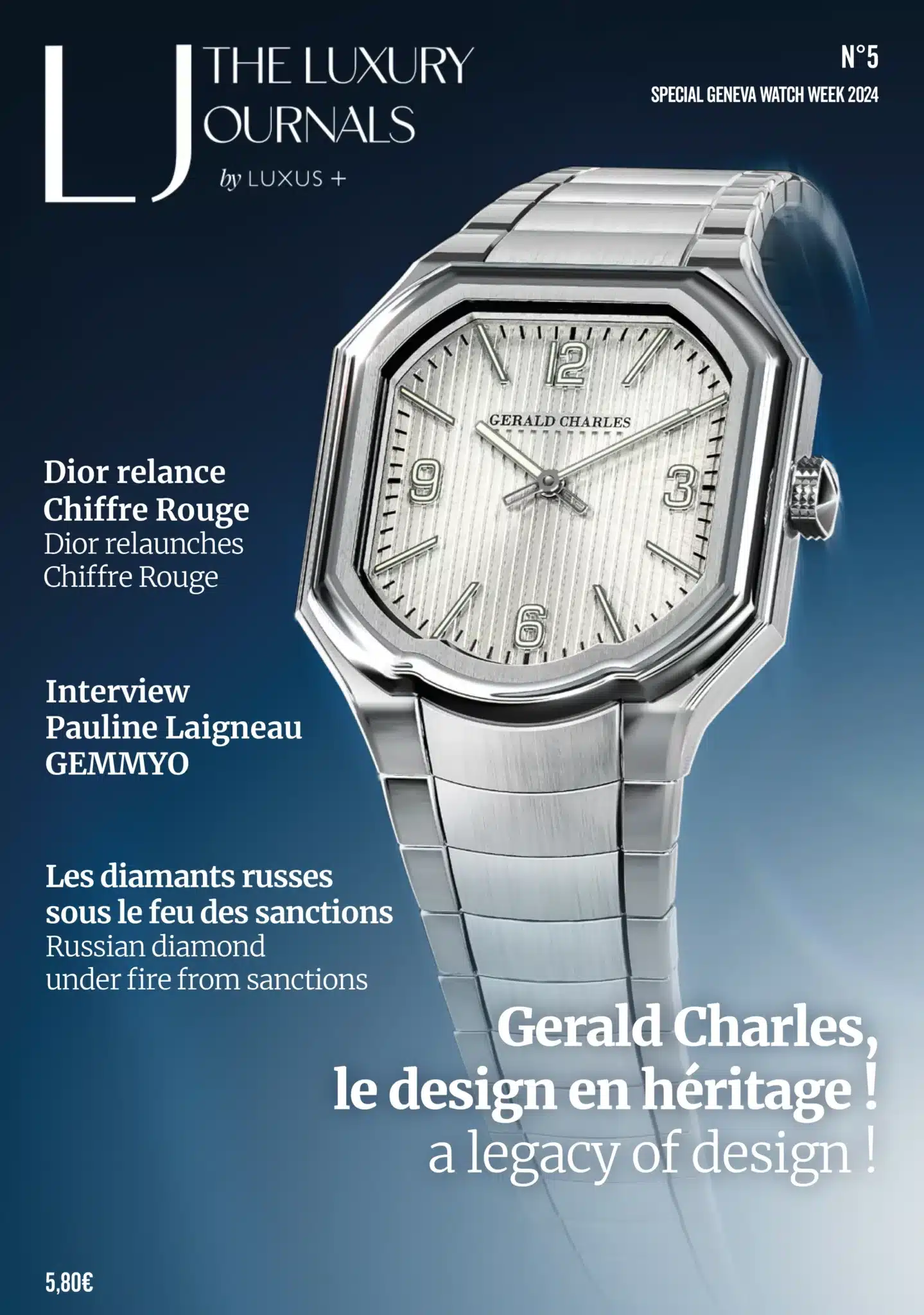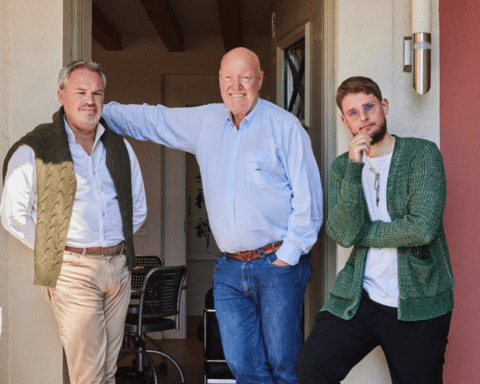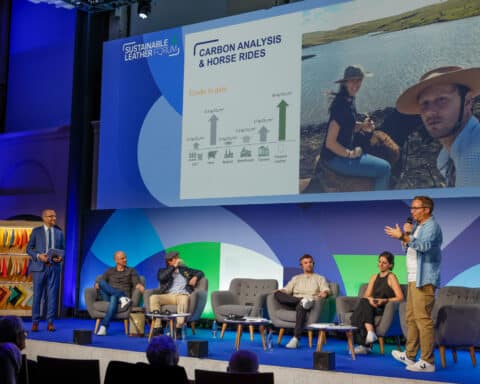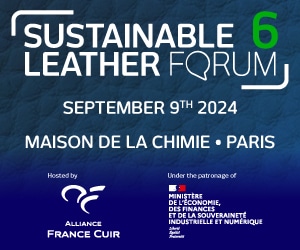[vc_row njt-role=”people-in-the-roles” njt-role-user-roles=”administrator,editor,author,armember”][vc_column][vc_column_text]
Farfetch, the leader in luxury e-commerce, and Outlier Ventures – the world’s leading Web3 gas pedal and investor – unveil the second class of startups in their Dream Assembly Base Camp gas pedal program. These seven companies, selected from 260 applications worldwide, share a common goal of shaping the future of luxury e-commerce on Web3.
Decommerce, Me Protocol, Nettle, Solaire, SPIN by Lablaco, Wovn, and Numbers Protocol will join this new 12-week remote incubation program.
Sustainability, rewards, and loyalty are at the heart of this new cohort of start-ups.
A new class mixing Web3 and Web2
The first edition of the Dream Assembly Base Camp incubation program, launched last year, revealed a clear attraction to web3.
In a statement released earlier this year, Blake Lezenski, program manager at Outlier Ventures, said, “Web3 can have a tremendous impact on the fashion industry and luxury retail, creating a new form of identity expression that helps redefine a deeper experience for consumers.”
He added, “Blockchain-based digital solutions also have the potential to positively address the industry’s biggest problems, such as counterfeit luxury goods, pollution from fast fashion consumption, or waste created by design prototyping.”
However, the class of 2023 is taking an unexpected turn in favor of solutions offering web2 use cases.
According to Vogue Business, this decision can be explained by a change in perception about web3. Indeed, in Meta’s opinion – which had contributed to an unprecedented craze for the metaverse – this model could wait 5 to 10 years before maturity. Even if web3 still offers very promising use cases for the sector.
Carol Hilsum, general manager of product innovation at Farfetch, told Vogue Business, “Rather than a pure Web3 strategy – focused on independent Nft strategies – companies are now looking to build a community around Web3 principles and technologies while integrating them with their Web2 technology block.”
As a reminder: Web 2 is characterized by the possibility for the user to consult content (web1) and publish it himself on a blog or social network. Web 3 adds an ownership brick with monetization via blockchain technology (NFT, avatar…). Thus, in Web3, the user can not only produce his content but also prove the authorship of his works and receive the related royalties.
In this context, Carol Hilsum identifies four trends within this second cohort: substantial infrastructures and tools, data infrastructures, community tools (such as Discord for luxury), and the maturity of the tokenization use case focused on loyalty programs.
On this last loyalty program dimension, three representatives (out of six) can be found within this promotion: Decommerce, Me Protocol, and Nettle.
Decommerce allows brands to co-create the future of commerce with their communities. They can host, engage and reward their communities through immersive experiences on their sites and apps.
For its part, Me Protocol offers a blockchain infrastructure “that enables open and frictionless loyalty rewards exchange between brands.”
Nettle is presented as the next step in the evolution of digital compensation and loyalty rewards. As such, the Nettle team has a unique blend of expertise and experience at Facebook, Moonpay, Discovery Channel, and American Express.
For its part, Solaire is building a Web3-based commerce infrastructure to connect and automate the retail industry.
Wovn powers Web3 commerce for designers, businesses, and brands.
The Class of 2023 also highlights a pure blockchain application, namely Numbers Protocol. This solution ensures transparency in digital media tracking, authentication, and provenance.

Farfetch also highlights 3D modeling and augmented reality (AR) solutions in line with its Virtual Try On services, which are all the rage in China, like a generative AI solution like Curie – selected in the first promotion – that it offers on its e-commerce site.
Thus, Spin by Lablaco presents itself as a unique Web3 commerce tool for fashion and culture. The solution offers a plug-and-play 3D AR and virtual reality (VR) digital experience that streamlines phygital (physical and digital) products, content, and data management within a single platform.
An acceleration program for luxury goods
It was in 2022 that luxury e-commerce platform Farfetch partnered with Outlier Venture, a Web 3 gas pedal and investment organization, supporting the startup ecosystem since 2014. The latter has notably supported in the past Boson Protocol, an e-commerce brick dedicated to the metaverse that had helped Tommy Hilfiger deploy its phygital strategy in the metaverse.
As reported by Forbes in September 2022, Outlier Venture has managed to raise $350 million in seed capital in various acceleration programs for more than 300 web3 startups.
The Dream Assembly Base Camp, a twelve-week remote incubation program, aims to enable innovative web3 solutions beyond the ideation phase to accelerate their learning and execution.
These goals are in line with Outlier Venture’s own objectives. Its founder and CEO Jamie Burke told Forbes he plans to support “more than 2,000 web3 founders over the next few years, hiring 40,000 people and raising $20 billion in funding over their lifecycle. As a result, he anticipates hiring the first billion users in the Web3 and Open Metaverse.”

Within the Dream Assembly Base Camp program, startups will have direct access to and support from a network of leading fashion, technology, and web3 mentors and investors to support their future fundraising efforts.
In digital fashion, Farfetch has convinced leaders from the Institute of Digital Fashion, RED DAO, DRAUP, and Cashlabs.
This second edition will offer personalized support to each startup and focus on data infrastructure in luxury, community tools, digital fashion experience, self-representation, and sustainability.
The previous edition (2022) valued eight companies: Altr, Curie, iiNDYVERSE, Metav.RS, Mintouge, Reblium, SKNUPS, and WEAR. An inaugural year that covered topics as diverse as luxury commerce, token design and economics, product roadmap, NFT, and community strategy.
Through the accelerator program, Curie was able to pilot with significant brands and platforms like Bloomingdale’s, Emperia, and WANNA. For its part, Metav.RS, present at the NRF 2023 trade show and competing for the LVMH Innovation Award, was able to sign contracts with renowned companies like Chanel, Westfield, and Stellantis.
In addition, Altr, the XR and web3 platform specialized in virtual fashion, which participated in INSEAD’s Future Forum 2023, offered new and innovative ways to present and monetize brands’ fashion archives during the last quarter.
Read also > YOOX Net-A-Porter : Richemont finalizes deal with Farfetch and Alabbar
Featured photo : © Farfetch[/vc_column_text][/vc_column][/vc_row][vc_row njt-role=”not-logged-in”][vc_column][vc_column_text]
Farfetch, the leader in luxury e-commerce, and Outlier Ventures – the world’s leading Web3 gas pedal and investor – unveil the second class of startups in their Dream Assembly Base Camp gas pedal program. These seven companies, selected from 260 applications worldwide, share a common goal of shaping the future of luxury e-commerce on Web3.
Decommerce, Me Protocol, Nettle, Solaire, SPIN by Lablaco, Wovn, and Numbers Protocol will join this new 12-week remote incubation program.
Sustainability, rewards, and loyalty are at the heart of this new cohort of start-ups.
A new class mixing Web3 and Web2
The first edition of the Dream Assembly Base Camp incubation program, launched last year, revealed a clear attraction to web3.
In a statement released earlier this year, Blake Lezenski, program manager at Outlier Ventures, said, “Web3 can have a tremendous impact on the fashion industry and luxury retail, creating a new form of identity expression that helps redefine a deeper experience for consumers.”
He added, “Blockchain-based digital solutions also have the potential to positively address the industry’s biggest problems, such as counterfeit luxury goods, pollution from fast fashion consumption, or waste created by design prototyping.”
However, the class of 2023 is taking an unexpected turn in favor of solutions offering web2 use cases.
According to Vogue Business, this decision can be explained by a change in perception about web3. Indeed, in Meta’s opinion – which had contributed to an unprecedented craze for the metaverse – this model could wait 5 to 10 years before maturity. Even if web3 still offers very promising use cases for the sector.
Carol Hilsum, general manager of product innovation at Farfetch, told Vogue Business, “Rather than a pure Web3 strategy – focused on independent Nft strategies – companies are now looking to build a community around Web3 principles and technologies while integrating them with their Web2 technology block.”
As a reminder: Web 2 is characterized by the possibility for the user to consult content (web1) and publish it himself on a blog or social network. Web 3 adds an ownership brick with monetization via blockchain technology (NFT, avatar…). Thus, in Web3, the user can not only produce his content but also prove the authorship of his works and receive the related royalties.
In this context, Carol Hilsum identifies four trends within this second cohort: substantial infrastructures and tools, data infrastructures, community tools (such as Discord for luxury), and the maturity of the tokenization use case focused on loyalty programs.
[…][/vc_column_text][vc_cta h2=”This article is reserved for subscribers.” h2_font_container=”tag:h2|font_size:16|text_align:left” h2_use_theme_fonts=”yes” h4=”Subscribe now !” h4_font_container=”tag:h2|font_size:32|text_align:left|line_height:bas” h4_use_theme_fonts=”yes” txt_align=”center” color=”black” add_button=”right” btn_title=”I SUBSCRIBE !” btn_color=”danger” btn_size=”lg” btn_align=”center” use_custom_fonts_h2=”true” use_custom_fonts_h4=”true” btn_button_block=”true” btn_custom_onclick=”true” btn_link=”url:https%3A%2F%2Fluxus-plus.com%2Fen%2Fsubscriptions-and-newsletter-special-offer-valid-until-september-30-2020-2-2%2F”]Get unlimited access to all articles and live a new reading experience, preview contents, exclusive newsletters…
Already have an account ? Please log in.
[/vc_cta][vc_column_text]Featured photo : © Farfetch[/vc_column_text][/vc_column][/vc_row][vc_row njt-role=”people-in-the-roles” njt-role-user-roles=”subscriber,customer”][vc_column][vc_column_text]
Farfetch, the leader in luxury e-commerce, and Outlier Ventures – the world’s leading Web3 gas pedal and investor – unveil the second class of startups in their Dream Assembly Base Camp gas pedal program. These seven companies, selected from 260 applications worldwide, share a common goal of shaping the future of luxury e-commerce on Web3.
Decommerce, Me Protocol, Nettle, Solaire, SPIN by Lablaco, Wovn, and Numbers Protocol will join this new 12-week remote incubation program.
Sustainability, rewards, and loyalty are at the heart of this new cohort of start-ups.
A new class mixing Web3 and Web2
The first edition of the Dream Assembly Base Camp incubation program, launched last year, revealed a clear attraction to web3.
In a statement released earlier this year, Blake Lezenski, program manager at Outlier Ventures, said, “Web3 can have a tremendous impact on the fashion industry and luxury retail, creating a new form of identity expression that helps redefine a deeper experience for consumers.”
He added, “Blockchain-based digital solutions also have the potential to positively address the industry’s biggest problems, such as counterfeit luxury goods, pollution from fast fashion consumption, or waste created by design prototyping.”
However, the class of 2023 is taking an unexpected turn in favor of solutions offering web2 use cases.
According to Vogue Business, this decision can be explained by a change in perception about web3. Indeed, in Meta’s opinion – which had contributed to an unprecedented craze for the metaverse – this model could wait 5 to 10 years before maturity. Even if web3 still offers very promising use cases for the sector.
Carol Hilsum, general manager of product innovation at Farfetch, told Vogue Business, “Rather than a pure Web3 strategy – focused on independent Nft strategies – companies are now looking to build a community around Web3 principles and technologies while integrating them with their Web2 technology block.”
As a reminder: Web 2 is characterized by the possibility for the user to consult content (web1) and publish it himself on a blog or social network. Web 3 adds an ownership brick with monetization via blockchain technology (NFT, avatar…). Thus, in Web3, the user can not only produce his content but also prove the authorship of his works and receive the related royalties.
In this context, Carol Hilsum identifies four trends within this second cohort: substantial infrastructures and tools, data infrastructures, community tools (such as Discord for luxury), and the maturity of the tokenization use case focused on loyalty programs.
[…][/vc_column_text][vc_cta h2=”This article is reserved for subscribers.” h2_font_container=”tag:h2|font_size:16|text_align:left” h2_use_theme_fonts=”yes” h4=”Subscribe now !” h4_font_container=”tag:h2|font_size:32|text_align:left|line_height:bas” h4_use_theme_fonts=”yes” txt_align=”center” color=”black” add_button=”right” btn_title=”I SUBSCRIBE !” btn_color=”danger” btn_size=”lg” btn_align=”center” use_custom_fonts_h2=”true” use_custom_fonts_h4=”true” btn_button_block=”true” btn_custom_onclick=”true” btn_link=”url:https%3A%2F%2Fluxus-plus.com%2Fen%2Fsubscriptions-and-newsletter-special-offer-valid-until-september-30-2020-2-2%2F”]Get unlimited access to all articles and live a new reading experience, preview contents, exclusive newsletters…
Already have an account ? Please log in.
[/vc_cta][vc_column_text]Featured photo © Farfetch[/vc_column_text][/vc_column][/vc_row]

























